What metal is the drum in the washing machine made of?
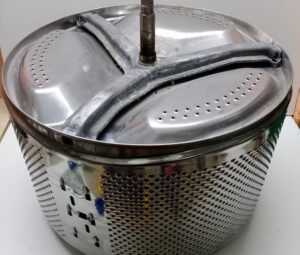 It’s unpleasant when a “domestic assistant” who served “faithfully” completely breaks down. But even from such a situation you can benefit if you sell the equipment for scrap. The metal of the drum in the washing machine deserves close attention, because it is known that it is made of valuable stainless steel. However, for some reason it is not particularly valued at collection points, but is accepted as ordinary ferrous metal. So what are modern drums in washing machines that are not afraid of corrosion actually made from?
It’s unpleasant when a “domestic assistant” who served “faithfully” completely breaks down. But even from such a situation you can benefit if you sell the equipment for scrap. The metal of the drum in the washing machine deserves close attention, because it is known that it is made of valuable stainless steel. However, for some reason it is not particularly valued at collection points, but is accepted as ordinary ferrous metal. So what are modern drums in washing machines that are not afraid of corrosion actually made from?
What alloy is used to make the drum?
Let's look at the alloys that form the basis of machine drums and do not rust over years of service. Manufacturers in factories usually use ferritic alloys, which include any anti-corrosion steel with chromium, where the chromium concentration can be up to 30%. These alloys demonstrate enhanced ferromagnetic qualities, which is why they can be magnetized even at extremely low temperatures outside the boundaries of a magnetic field. Such an alloy boasts:
- its very significant strength;
- excellent ductility;
- oxidation resistance.

According to the AISI group of standards of the American Steel and Alloy Institute, ferrites are defined in class 4XX. Specifically, we are interested in the 430 type, the most common alloy in the world for creating washing machine drums. 430 steel is incredibly ductile, making it easy to weld and machine the metal into drum shapes.
Products made from this alloy perform well in high humidity levels, continuous ultraviolet radiation, sub-zero temperatures and other harsh operating conditions.
Most often, this alloy is positioned in terms of its chemical composition as steel 12X17 - the Russian analogue of AISI 430. But foreign ferrite has a low carbon concentration, which is why it does not need to be additionally stabilized with titanium. It is the low carbon content that ensures that the alloy is not prone to intergranular corrosion at high temperatures, and also provides excellent weldability. 430 alloy is subject to intense carbide formation only at temperatures above 1000 degrees Celsius, which makes it the most reliable material in everyday life.
The characteristics of AISI 430 allow us to call it an improved analogue of alloy 08Х17Т, which is recommended by GOST as a replacement for steel 12Х18Н10Т and 12Х18Н9Т. In addition, this ferrite is insensitive to corrosive intergranular destruction at temperatures from 500 to 800 degrees Celsius, plus, in comparison with analogues, it is not very sensitive to chloride cracking under high loads.
And considering that it is also much cheaper than the AISI 300 brand, which is characterized by a high nickel content, it is not at all surprising that the 430 alloy is mainly chosen by large manufacturers of household appliances. This steel is an ideal price-quality ratio, allowing creators to save money on washing machine drums.
Why is the drum not accepted as “stainless steel”?
But if the drum is made of this stainless alloy, which is so good, then for what reasons is it not accepted as stainless steel? Usually, employees of reception points simply “strike” the grinder on the drum with a rotating cutting wheel, and then, based on the nature of the spark, determine the stainless steel is of low quality, suitable only for the category of ferrous metal. How to understand this behavior of the reception center specialist? Is this another scam, a mistake by an unqualified employee, or a completely justified demand? To answer this question, we will analyze in detail the composition of the 430 alloy.
- Approximately 81% iron.
- About 16% chromium.
- Up to 0.8% silicon.
- Up to 0.8% manganese.
- Up to 0.4% phosphorus.
- Up to 0.3% sulfur.
- Up to 0.12% carbon.
- Up to 0.02% nickel.

The price of metal at collection points is determined by the presence of expensive components, that is, chromium and nickel. Due to the fact that there is not much chromium in 430 AISI, and there is much less nickel than any other element, this metal is refused to be accepted at a high price. It is also necessary to pay attention to silicon, because the less it is in the alloy, the more valuable the processing of the metal will be. The silicon content is determined by a grinder, so such a test of steel will clearly show its low price.
As we wrote above, companies are trying their best to choose high-quality, but cheap materials, which is why they choose 430 AISI metal. It has a high silicon content and incredibly low chromium content. That is why it is so unprofitable to hand it over to a collection point, unlike other elements of the washing machine and body, which can boast a high price, if only because of their impressive weight.
Interesting:
Reader comments
- Share your opinion - leave a comment

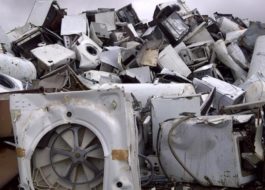
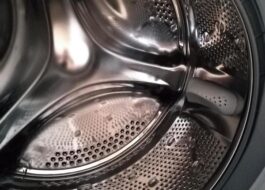


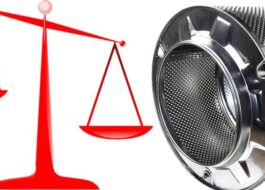
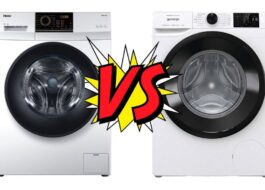














Add a comment